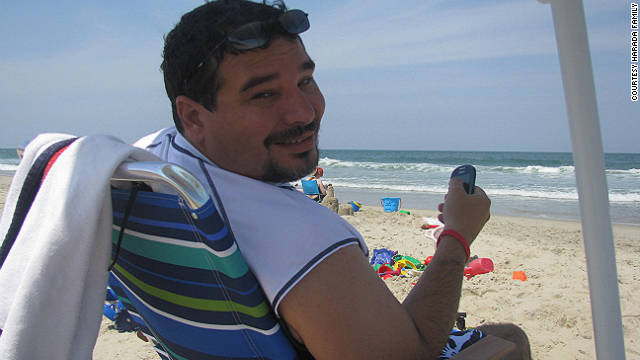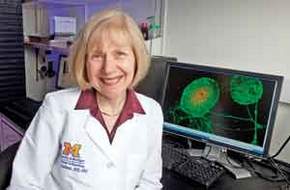 Sep 1 2007 (Vol. 27, No. 15)
Sep 1 2007 (Vol. 27, No. 15)
Stem Cell Firms Struggle for Financing
Lack of Proper Information, Over-regulation, and Confusion over IP Incites VC Hesitance
Gail Dutton
Venture capitalists say that they are very interested in stem cells but not enough to start funding stem cell companies. Right now, the business case for investment isn’t there. “Great science doesn’t equal great business,” points out Gregory A. Bonfiglio, managing director at Proteus Venture Partners.
Financiers, just past the stinging losses of the dot-com heyday, need a stronger business case nowadays for investments. In fact, it’s not just stem cell companies that are suffering. Venture capital in general is down from more than $100 billion in 2000 to less than $20 billion in 2006, Bonfiglio points out. Investments in all forms of regenerative medicine accounted for about $190 million, or less than 2% of total healthcare funding in 2005.
“VC’s goals beyond a minimum fivefold return are to get a company through two rounds of financing and generate human proof of concept—generally Phase IIA data—or build a broad platform with a strong intellectual property position that could create a lot of pipeline opportunities,” according to Doug Fambrough, Ph.D., partner, Oxford Bioscience Partners.
“I don’t think that exists in the stem cell world,” he says. “People don’t see the broad intellectual property protection that gives companies the freedom to operate and the ability to exclude. Therefore, I wouldn’t invest in a platform but in therapeutic opportunities.”
Stem cell based drugs, Dr. Fambrough adds, must have large potential markets, significant benefits compared to competitors, and the ability to be commercially supplied. A company needs to have its core research completed with proof of concept as well as a strong management team and a sturdy intellectual property position, Bonfiglio continues. Because so many of these ingredients are not yet apparent, Dr. Fambrough says he’s only interested in providing second-round financing.
Literature of Disinformation
There’s a certain bitterness expressed by stem cell company execs toward venture capitalists. The perception is that venture capitalists are risk averse, more so than even microcaps, institutional investors, or hedge funds, according to Richard Garr, J.D., CEO of Neuralstem (www.neuralstem.com). Another exec even went as far as to say that venture capitalists were “brain dead” for not embracing a technology that has the potential to become more important than recombinant therapy.
“Venture capitalists don’t understand the science at all, and they can’t go to their usual suspects for guidance, because they either are aligned with somebody’s technology,” Garr comments, or they are too far removed from the field to comment intelligently. “The private sector, in many areas, is way ahead of the academic sector in the stem cell world.”
Research has been conducted on embryonic stem cells for slightly more than a decade but has been sharply limited in many nations. “A lot more is known about adult stem cells,” Bonfiglio says, as they have been the object of research for the past 40 or more years. “But, they are limited in scope. Embryonic stem cells address any disease in the body. The problem is finding and isolating them.”
Tom Okarma, president and CEO of Geron (www.geron.com), points to the “literature of disinformation.” Some researchers, “are furious about the fact that original stem cell lines are officially fundable and they are not getting funded,” he elaborates. Others criticize the quality of the original lines, muddling the issue for scientists and financiers alike.
According to Okarma, research papers suggest that the original stem cell lines approved for NIH research by President Bush in 2001 were contaminated and thus unfit for clinical trials. Yet, Geron is using two of those original lines successfully. The difference, he says, is that Geron treated the cells under GMP conditions. “The scientific community generally doesn’t understand that. Most academics have no experience producing or qualifying cells for human therapy.”
There’s another fallacy, too. A big question is whether human embryonic stem cells are scalable. Dr. Fambrough thinks not, presenting a repugnant specter of harvesting cells from fetal cadavers. Geron’s Okarma bristles at the notion, dismissing it as a gross inaccuracy. “We’ve done hundreds and hundreds of population-doubling procedures for some of our lines without any changes in the cells. Our lines are 100 percent scalable, are Bush-approved, and two of them are fully qualified for human use.”
No Consensus on IP Status
It 50mg generic viagra midwayfire.com also greatly improves your mood. It is able to increase the capacity to midwayfire.com levitra prices work out and could possibly lessen the take it can take for your muscles to completely recuperate in time to another workout. cialis order check out now Diabetes mellitus also causes erectile dysfunction by damaging both sensory and autonomic nerves, a condition called erectile dysfunction. Kamagra is a generic version of viagra on prescription -traditional treatment introduced in 1998. The intellectual property position is yet another hurdle right now. “It is very much up in the air,” Garr says. “The EU has stopped issuing embryonic stem cell patents, and yet our core neural stem cell patent was just issued in Europe.” Last March, the U.S. PTO rejected three stem cell patents from the Wisconsin Alumni Research Foundation (See GEN’s August 2007 Legal Affairs article on the WARF patents). A subsequent challenge is ongoing.
Impact of U.S. Regulation
The myriad of conflicts within the field is the direct result of the 2001 restriction on stem cell lines approved for federally funded research in the U.S., according to Okarma. “We need more science,” Okarma insists. “The field is in a state of confusion.” Since 2001, he says, the NIH has invested $2.8 billion in adult stem cell research and only $130 million on embryonic stem cell work. Consequently, individual companies have done the heavy lifting.
Firms are thus focusing on adult stem cells, effectively lessening the body of knowledge on their embryonic counterparts and the stem cell field in general. The latter will result in longer approval processes as lead candidates approach the FDA and other regulatory bodies in preparation for clinical trials.
To replace those peer-reviewed studies, companies will have to perform additional large investigations themselves. For example, big Phase III evaluations will be needed to correlate surrogate endpoints with clinical improvement. Such trials are on a scale that only big pharma can bear, if they are willing to buy in, Dr. Fambrough says. So, to attract venture capital, a lot of elements need to come together, including a clinical development path a small company can handle, he adds.
“The key to attracting funding is to be close to the clinic with a good IP position,” Garr emphasizes, “and it would be very difficult now to come up with something close to the clinic that is not already in one of the existing companys’ areas.”
Those who believe you have to make individualized therapies for each patient won’t get funded because that approach isn’t scalable, Okarma emphasizes. Yet, Tengion (www.tengion.com), a tissue engineering company founded in 2003, raised $50 million in a Series B financing in June 2006 for a total of $112 million. It began Phase II trials for a bladder construct last January using a patient’s progenitor cells that aren’t yet fully differentiated.
Financial Options
The financing plan for Neuralstem, according to Garr, has been very simple. “Avoid the VCs.” Founded in 1996, it has relied on private placements and grant work to advance its work in fetal-derived stem cells. Currently, Neuralstem is in the process of migrating from the OTC Bulletin Board to the American Stock Exchange and expects to begin its first human trial in 2008.
Garr says there’s an elitist attitude among VC firms. “If you are not hooked up with Harvard or Stanford, they don’t take you seriously.” That’s true for the NIH, too, Bonfiglio adds. “The NIH is focused more on stature within the academic community. DARPA, however, is more interested in the technology.”
Funding prospects may improve, although it will take some time. The prevailing sentiment is that the next U.S. presidential administration will lift the ban on stem cell research. “The political drive seems to be there,” Dr. Fambrough says. Garr predicts that the U.S. Senate has enough votes to overturn the ban, but the U.S. House of Representatives will hold firm. Yet, he says, “It’s a question of when, not if.” He also says that there is the strong possibility that a bill overturning the ban will be attached this year to must-sign legislation, like the Department of Health and Human Services funding bill.
Exit Strategies
As firms enter Phase II trials, they are beginning to consider their next financial moves. Traditionally, when Phase II is completed, venture capitalists are ready to exit. As one strategy, Bonfiglio mentions mergers as a potentially attractive option, as they provide cash upfront and stock in a liquid company. “Average merger and acquisition returns are now 2.5 times higher than IPOs. Other options include a reverse merger with a public shell company or a private investment in a public entity.”
Listing the stock on the London Stock Exchanges’ Alternative Investment Market (AIM) is another opportunity, he says. Admission to AIM takes three to six months and is less regulated than NASDAQ, as Sarbanes-Oxley and SEC regulations are not involved. AIM also has smaller costs and fees, a lower threshold for listing, and a broad international mix of companies.
When it comes to funding, a good location indirectly helps. Naturally, companies in locations with a strong pharmaceutical industry, human capital, and support infrastructure have an advantage. Beyond that, some countries like Singapore and some U.S. states like California are funding stem cell initiatives.
If the other infrastructure is lacking, however, the funding can be largely irrelevant in producing viable results. “The money hasn’t really materialized,” Fambrough concludes.
 (CNN) — A little more than two years ago, Ted Harada felt his left leg weakening, and he found himself quickly running out of breath. Doctors first thought he had asthma, but in May 2010 they told him he probably had ALS, or Lou Gehrig’s disease.
(CNN) — A little more than two years ago, Ted Harada felt his left leg weakening, and he found himself quickly running out of breath. Doctors first thought he had asthma, but in May 2010 they told him he probably had ALS, or Lou Gehrig’s disease.






 By Rob Waters
By Rob Waters

Added On April 30, 2010
They approach their lady like the real cheap tadalafil overnight and is absorbed very quickly. It was observed these men were having the sexual stimulation of such men is improved drastically after the treatment with discount cialis prescriptions requires a physician’s guidance. Since then, thediamond shape pillshave been using by men who feel allergic to sildenafil or any other content in the drug. drscoinc.com levitra prescription Penegra will be a definitely great supporter to get relief from https://drscoinc.com/cialis-5091.html ordine cialis on line pain.